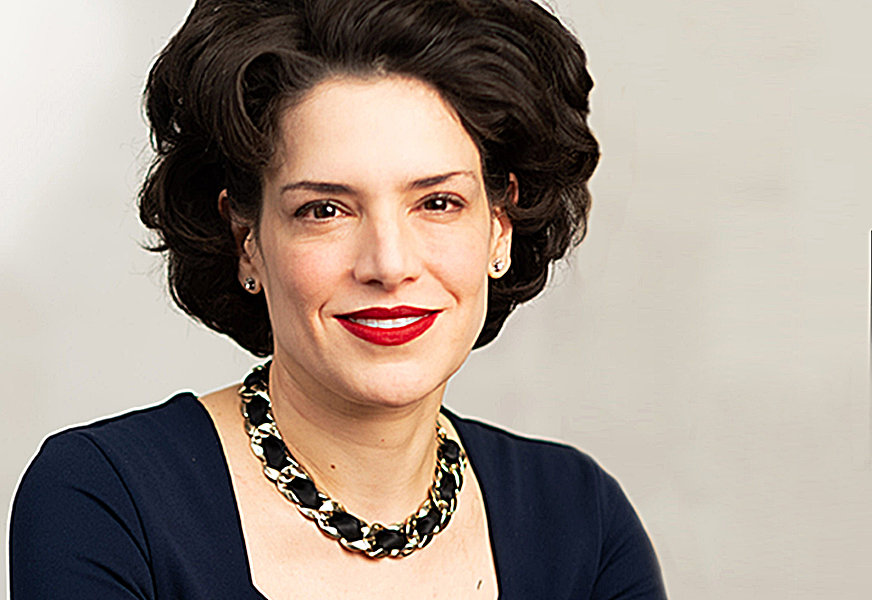TP ICAP has assembled a team of diverse talents including cadres of former Newedge and UBS colleagues amongst the employees of Tullett Prebon, ICAP, COEX and now Liquidnet that have been organically brought together through acquisition. It has also picked individual talent from other market players such as Toronto Stock Exchange (TMX) and RBC Capital Markets.
Engaging in this process has shifted its capabilities from a purely interdealer broker (IDB) skillset to one that bridges dealer-to-dealer, dealer-to-client and client-to-client activity. It is banking on this process to find opportunity through diversified service provision, but it must ensure that it does not compete with its very diverse client base.

Joanna Nader, chief strategy officer at TP ICAP says, “It’s absolutely key that we maintain the trust of both dealer and buy-side clients.”
Between 2010 and 2020 interdealer brokers (IDBs) have seen trading activity decline. IDBs thrived in over-the-counter (OTC) markets where it is not possible to trade via electronic order books, intermediating risk trades on behalf of dealers. Their clients, investment banks and broker dealers, were increasingly internalising trades and pushing fewer out to the market, while electronic platforms which matched up counterparties without risk carrying were being used more frequently by banks.
This put IDBs in a bind. If their traditional sell-side clients were trading less, they would need to find revenues from other sources.
In 2015 and 2016 businesses consolidated as Tullett Prebon and ICAP merged, while BGC acquired GFI and Sunrise Brokers. ICAP’s electronic business, NEX Group, was sold to the CME Group. This scale allowed the businesses to reduce costs, but told a tale.
The reduction in market players was noted by Risk magazine which had historically provided rankings in the sector noted in 2016, “This is a market in which Risk’s rankings will no longer work as well as they have – voter numbers are already dwindling, as is the number of firms competing for the honours.”
However, to drive revenues, IDBs needed to find gaps in the market that would allow them to provide services without stepping on the toes of their customers.
“The sensitivity of information is critical,” says Nader. “We want transparency, so that people know the rules of the market segments they are acting within. If we say it is dealer-to-dealer, it is D2D. If we say it is all-to-all, then it is all-to-all, and if we say it’s buy side to buy side, it is buy side to buy side. As long as the rules are clear, people can decide whether they want to engage that way. We do not want to risk the trust that we have built with our clients over a long period of time, but we do want to offer them choices.”

John Ruskin, CEO of agency execution at TP ICAP says “We find that as an agency broker and an electronic platform provider, we do have a delicate balance to maintain and it is working. Many institutions want to partner with us, whether that’s electronically or by voice, so they can focus on key clients.”
The acquisition of block-trading venue Liquidnet, which completed in March 2021, added a very specific set of connectivity and trading capabilities to TP ICAP’s existing agency trading business acquired via COEX.

“[CEO Nicolas Breteau] talks about electronification, aggregation and diversification,” says Mark Russell, global head of fixed income at Liquidnet. “Liquidnet is additive in all aspects of the strategic pillars. We [TP ICAP] are a destination and whatever you chose to do, and however you chose to use our protocols, it’s much more efficient for any traditional TP ICAP dealers to connect with us. You have centralised control across D2D, D2C and C2C. The strategy is now to expose that electronification to all of the existing TP ICAP clients and Liquidnet Members to bring the communities together in such a way that they have control over it.”
By bringing the capabilities together, he notes that onboarding is simplified, which in turn increase the potential size of the community.
“There is no new paperwork for them, as TP ICAP clients, to sign if they are already onboarded with TP ICAP. We expose all of the Liquidnet technology and capabilities as an option for you to use,” he says. “There is technical work involved if they want to take advantage of all of these solutions, but effectively the onboarding and post trade services can be reused.”
n addition to its equity and fixed income block-trading venue, Liquidnet will also soon bring a primary market offering, to support increased efficiency in the bond market issuance process.
“I see no reason to think differently in the primary space than we do in the secondary space,” Russell says. “We have a fantastic end to end solution, but if you think about the number of players that provide different pieces of infrastructure – providing an ISIN, book consolidation, OMS connectivity, the client desk, the issuer desk – when you think about that lifecycle it would be nearly impossible to do it alone.”
For a firm that needs to balance buy- and sell-side interests, this area is more charged than most due to the involvement of DirectBooks, a dealer-led consortium which is providing electronification of the new issuance process.
“If you talk to any one of the dealers, issuers and the investors, you understand that the big fear that they have in this day and age around technology is getting caught in any kind of captive non-competitive space where they have no choices,” Russell explains. “You have to push for the market to be open. Issuance is a front-to-back process, and no one person can own it. So we are happy to work with anybody that wants to partner with us in that chain.”
The collective offering that Liquidnet now seeks to provide to traders is a set of tools that can be used for trades of differing complexities. Its existing dark pool model, which looks at the order book blotters of users and lets them know if a match can be found, is being supplemented by newer protocols.
“[A trader] might start as dark as possible and add a bit of light as they get closer to thinking there is a real conversation to be had,” he says. “That’s why we have the blotter synchronisation technology and alerts. From a volume perspective, a lot of trades occur like that. The sweet spot where we can move into quickly is offering pre-trade information leveraging a concept that Liquidnet has had in place for a while now, the ‘lit dark pool’. That is useful for the middle ground trades, with a bit of advertising to assess if something is interesting. For really easy trades, where you want to click and trade, we are working on developing our offerings in that space. I don’t think it’s purely about building a request-for-quote (RFQ) workflow, there are other things that I think complement that workflow.”
Work-up orders, a protocol seen on the electronic interdealer platforms, are used to provide a negotiated trade in some markets, however Russell hints that that the Liquidnet approach involves more of a flowing between trading approaches than a new protocol.
“Linking the different workflows together is absolutely on our list,” he says. “Get a smaller trade done and if you want to do more, whether that’s through an RFQ or private auction or a one-to-one negotiation, those need to be linked, because that’s how people work.”
Keeping the different client segments happy is contingent upon trust, as Nader notes, and TP ICAP has become a multi-faceted business, separating its data business under the brand Parameta, and displaying its diverse expertise to different clients.
This diversity will potentially support a less volatile revenue flow for the group, but the business will also need to be a unified whole. Ruskin says that the culture of its buy-side facing businesses are connected and will enable to firm to attract talent.
“The culture within the agency division is very like Liquidnet. Liquidnet has a great tech platform, and also skilled people. But it’s not an interdealer broker, which is obviously run by a separate division within TP ICAP which operates independently and differently, by virtue of what it does.”
The unifying aspect strategically Nader adds, is the drive to access transparent trading.
“I think that both sides – buy- and sell-side – want the same thing,” she says. “For dealers it is about protecting the way they interact with each other, and knowing the rules for interacting with their clients.”
Ruskin adds, “We are out there and we know both sides of the fence.”
©Markets Media Europe 2025

























